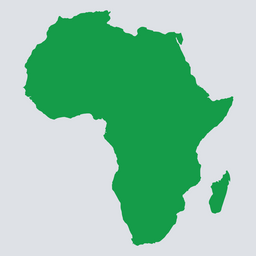OP-ED - Africa's AI awakening: from Western brainrot to homegrown tech sovereignty
As Gen Z in the West abandons social media's endless scroll for "meaning," Africa is laying internet connectivity infrastructure at scale. Will it import yesterday's engagement-maximisation playbook or build for actual human flourishing?

In 2016, when I asked Oliver Fortuin what disruptive trend could render legacy telcos obsolete within a decade, he answered with one word: "content."
Fortuin, then leading BT's Sub-Saharan operations (now CEO of Airtel Business Africa), had been arguing that "the conversation about Africa charting its own destiny doesn't happen without technology." He wanted Africa to move beyond merely deploying Western innovations to actually originating them: homegrown and home run, not just jumping on board at the roll-out stage.
Whether today's content landscape matches his 2016 vision, I can't say. But the disruption is undeniable, and the timing is curious.
GWI social media data shows time on platforms peaked in 2022 and has declined since, with young people leading the retreat. Canadian startup founder, investor and advisor to TikTok and Reddit Greg Isenberg's viral observation captured the mood: "brainrot is OUT. meaning is IN." Gen Z in mature markets is abandoning endless scroll for intentional communities and slow media: things that feel "real, slow, and intentional."
Meanwhile, just as the West experiences its social media fatigue, Africa is building internet connectivity at unprecedented scale.
According to GSMA Intelligence, Africa will reach 915 million mobile users by 2030 (up from 710 million in 2024), with mobile internet users climbing to 576 million. The industry contributed $140 billion to GDP in 2023 and is projected to reach $170 billion by 2030, supported by $77 billion in infrastructure investment through 2030.
Airtel Africa's 22% Q2 2025 revenue growth, driven by 71 million active data users, is one datapoint in a broader buildout: the 44 MW Nairobi data centre, Vertiv partnerships expanding capacity continent-wide, aggressive 4G/5G rollout.
Victor Mapunga's Shona Prince Technologies is enthusiastically advancing Starlink across markets incumbents weren't adequately serving, with the latter organisation promising direct satellite-to-phone connectivity within two years. East Africa is building data centre capacity whilst West Africa leads in fintech innovation, regional strengths reflecting different infrastructure histories.
The pipes are being laid. The capital is flowing. But here's where Fortuin's 2016 concerns about technological self-determination become uncomfortably relevant.

Consider the concentration emerging at connectivity's edge. NVIDIA's ”strategic investment” in Cassava Technologies (Zimbabwean billionaire Strive Masiyiwa's pan-African tech conglomerate) publicised last week deepens a partnership that began with plans for a $720 million AI factory: 3,000 GPUs deployed in South Africa this year, with expansion to Nigeria, Kenya, Morocco, and Egypt planned over the next three or four years.
NVIDIA holds 93% of the global GPU market. The same entity increasingly provides satellites, platforms, AI models, and compute infrastructure: vertical integration at planetary scale.
For context, this mirrors Amazon's AWS and Huawei's dominance in cloud computing: efficient, powerful, and creating dependencies that constrain alternatives. When Ziaad Suleman, Cassava's CEO for South Africa and Botswana, notes that "Africa has historically contended with receiving second-rate technology," he's right that NVIDIA's hardware changes that equation. The question is what equation replaces it.
This is where Africa's 60% usage gap (those living within coverage but offline due to device costs, digital skills deficits, or safety concerns) intersects with sovereignty questions. As GSMA notes, a $40 smartphone could connect 20 million additional Sub-Saharan users. But connected to what? If Western platforms arrive with engagement-maximisation playbooks just as mature markets reject those models, Africa imports yesterday's brainrot rather than building tomorrow's meaning.
Yet alternatives exist. Masakhane, the grassroots pan-African natural language processing (NLP) collective, has released 400+ open-source models and 20+ datasets since 2018, building language tools "for Africans, by Africans." Jade Abbott's Lelapa AI and Alex Tsado's Alliance4AI advocate for local GPU infrastructure and AI sovereignty: the ability to control how AI develops locally. As Tsado notes, "With zero GPUs in your country, I don't know how you are sovereign."
Infrastructure is never neutral. It embeds assumptions about value, agency, and accrual. Africa's 60% under-25 population positions the continent to redefine "meaningful" digital participation, flipping the script on Western fatigue, if policy enables it.
What might that look like? Nigeria's data localisation laws offer one model. Investment in open-source ecosystems like Masakhane provides another. Regional data-sharing initiatives (following Mozilla's African language voice data project, Common Voice) could democratise training datasets. Public-private partnerships for shared compute infrastructure, similar to how undersea cables transformed connectivity, could spread AI access costs.
Fortuin was right that content would prove disruptive. What's clear now is the disruption extends beyond business models to questions of sovereignty and agency. The connectivity he's advancing at Airtel could either repeat the West's mistakes at continental scale or become the foundation for something different. That is, if African builders study the West's failures as closely as its successes, and if policymakers create space for homegrown alternatives before the terms get set elsewhere.
The pipes are being laid. The satellites are launching. What flows through them will determine whether Africa arrives just in time to fall into the social media trap Gen Z is beginning to side-step with aplomb.
Editorial Note: A version of this opinion editorial was first published by Business Report on 28 October 2024.


